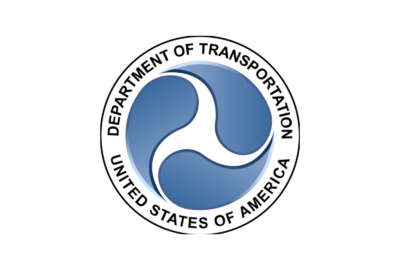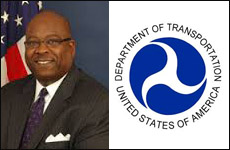
DoT wants safe streets safer for the most vulnerable commuters
Fourteen percent of all traffic fatalities today are pedestrians and lesser crashes involving foot and bicycle traffic often go unreported.
Pedestrians and bicyclists are most vulnerable along transportation corridors that have not been built to provide for their safe travel, said Barbara McCann, the Department of Transportation’s director of the Office of Safety, Energy and the Environment.
“This is a really common problem across the United States and it’s really what our Safer People, Safer Streets initiative is aimed at working on,” she said during an interview for Agency of the Month.
Most fatalities for pedestrians occur in urban areas. McCann said crashes mostly happen at midblock locations rather than intersections. One of the biggest factors is speed of the automobile. It’s often the difference between whether the crash is a minor incident or a fatal one.
“We see fatalities among nonmotorized users really going against the grain of the rest of the trend in service transportation,” she said. “We see automobile deaths declining steadily for several decades, but bicycle and pedestrian crashes have either stayed steady or have risen, and pedestrian deaths now account for 14 percent of all traffic fatalities.”
Cycling and walking are growing in popularity, especially among younger people, according to survey data. McCann said that’s because lifestyles have changed and infrastructure is making it easier and easier to travel.
Lack of quality data
Two of those surveys include the Federal Highway Administration’s National Household Travel Survey (NHTS) and the Census Bureau’s American Community Survey. But McCann said neither survey offers “super accurate” information when it comes to cycling and walking. The NHTS, in particular, only looks at primary modes of transportation. Some counting efforts at the local level have shown even greater increases in foot and bicycle traffic than results from the national surveys.
“Most commuting trips include some amount of walking, particularly transit trips often involve a significant amount of walking but that wouldn’t be captured,” McCann said. “So there’s a long way to go in really making sure that data on how much people are travelling by foot and bicycle, to make that more accurate.”
There are a number of new technologies for counting pedestrians and cyclists. Through the Federal Highway Administration’s Bicycle-Pedestrian Count Technology Pilot Project, 10 cities received federal funding to implement and develop new methods of counting cyclists and pedestrians.
McCann said another area that is troubling is a large number of crashes involving cyclists and pedestrians are never reported. Without a police report, incidents often aren’t logged because bicycles and pedestrians aren’t insured the same as automobiles.
“There’s a lot about biking and walking that the data isn’t as robust as we’d like it to be,” McCann said.
A mode for all modes
There isn’t a federal bicycle and pedestrian administration. In fact, cycling and walking aren’t considered modes of transportation at the department, they’re considered access points for other modes, McCann said. Many of the field offices from the different modes across the department have worked together and contributed to the Safer People, Safer Streets initiative by assessing pedestrian and bicycle safety at nearby traffic corridors.
Some of those problems they found are immediate, McCann said. For example, there isn’t a crosswalk on a street where one is needed. She said examples where pedestrians weren’t factored into the planning process when the streets were built, are common across the country.
Other issues are jurisdictional, McCann said.
“Is it the responsibility of the transit operator or is it the responsibility of the city department?” she asked. “At the federal level, we don’t own any of these facilities, but we served a convening role to get all of these different voices together to talk about who’s responsible and how to make changes and how to fix things.”
Copyright © 2025 Federal News Network. All rights reserved. This website is not intended for users located within the European Economic Area.
Lauren Larson is Federal Drive producer and broadcast operations manager at Federal News Network. Follow @llarsonWFED
Follow @llarsonWFED




